Soil Teaching Resources
Browse printable soil activities, worksheets and more science teacher resources created by teachers for primary teachers like you!
This collection of printable and digital activities is aligned with the Australian science curriculum and includes a mix of differentiated and editable options to help you save time on your lesson plans. Each soil-themed resource has been carefully reviewed by a member of our teacher team to ensure it's ready to be used in your classroom!
Looking to better understand this part of the science curriculum, or just looking for fresh ideas to engage your students? Read on for a primer from our teacher team, including a definition of soil you can share with your students.
What Is Soil? A Kid-Friendly Definition
Let's start off with a definition for soil that you can use to describe this Earth science term to your students!
Soil is part of the top layer of earth that we dig into, and it's another name for what we often call dirt.
Soil is a vital material because it provides nutrients and support for plants to grow, and it also helps to filter and clean water. Different types of soil have different properties, such as how much water they can hold and how easy they are to dig.
What Is Soil Made Of?
Soil is made up of a huge mixture of things, including minerals, which come from rocks that break down over time, and organic matter, which includes dead plants and animals that have decomposed or broken down into tiny pieces. Other things that can be found in soil include air, water and tiny creatures like worms and insects.
How Is Soil Formed?
Soil isn't created overnight. It takes years and years for the process of soil formation — also known as pedogenesis — to happen, and just how long is influenced by a number of factors like climate and the topography of the land. Here's a brief overview of the main processes involved in soil formation:
Weathering
This is the breakdown of rocks and minerals through physical, chemical and biological processes. For example, water and wind can erode rocks, while acids and plant roots can dissolve and break down minerals.
The Breakdown of Organic Materials
Have you ever noticed a bunch of dead leaves that have gathered in one area? If those leaves stay there and continue to be rained on and hit by sun and other weather conditions, eventually they will break down into soil!
Dead plant and animal material comes together on the surface of the soil, and it eventually breaks down. This provides a source of nutrients for soil organisms and helps to build up the soil's organic matter content — creating fresh soil.
Composting is a good example of this!
Biological Activity
Organisms such as bacteria, fungi and earthworms play a vital role in soil formation by breaking down organic matter, releasing nutrients and creating pore spaces in the soil.
What Are the Layers of Soil?
Soil is a bit like a cake with different layers. These layers are called horizons. There are three main layers of soil:
- Topsoil — The top layer of soil is called topsoil. It's made up of a mix of organic matter (like leaves and dead plants) and minerals. This layer is important because it provides plants with the nutrients they need to grow.
- Subsoil — Right below topsoil is a second layer (or horizon) that's made up of larger pieces of rock and minerals. It doesn't have as much organic matter as the topsoil, but it still has some important minerals that plants need.
- Bedrock — The bottom layer of soil is made up of solid rock. It's not really soil anymore because it's too hard for plant roots to grow through, but it's still important because it's the foundation that holds up the layers of soil above it.
What Are the Different Types of Soil?
There are many different types of soil that your students are bound to encounter in their lifetime, and even the type of soil outside your school is likely to vary based on where it's built. That said, the different types of soil can generally be classified into three main categories based on the size of their particles:
Sand
Sand particles are the largest of the three types of soil particles, usually between 0.05 and 2 millimetres in diameter. Sandy soils drain water quickly and are good for growing plants in dry areas.
This type of soil feels gritty to the touch. You're likely to find sand on a beach and, of course, in a sandbox on the playground.
Silt
Silt particles are smaller than sand particles, ranging from 0.002 to 0.05 millimetres in diameter. This type of soil is smooth like flour, and it's made up of smaller pieces of rock and minerals.
Silt soils have good water retention and nutrient-holding capacity, making them fertile and suitable for many crops.
Clay
Students may think of art class and not soil when they hear the word clay, but this is a type of soil! Clay particles are the smallest of the three types of soil particles at less than 0.002 millimetres in diameter. Clay soils hold water and nutrients very well, but they can be heavy and difficult to work with.
What Is Loam? A Kid-Friendly Definition
Loam is a type of soil that's made up of a mixture of the three main types described above.
Loam typically has a balance of sand, silt and clay particles, which makes it especially good for growing plants.
Why Is Soil Conservation Important?
You might want to touch on conservation during your soil studies. Here's how we explain this concept to students:
Soil conservation is how we take care of soil so that it stays healthy and doesn't get damaged or washed away. Without healthy soil, we wouldn't be able to grow enough food to feed everyone on the planet, so teaching our students about being good stewards of the Earth includes educating them about conservation.
Soil conservation helps us keep the soil healthy by doing things like planting trees and plants, using compost instead of chemicals and not over-farming.
- Free Plan
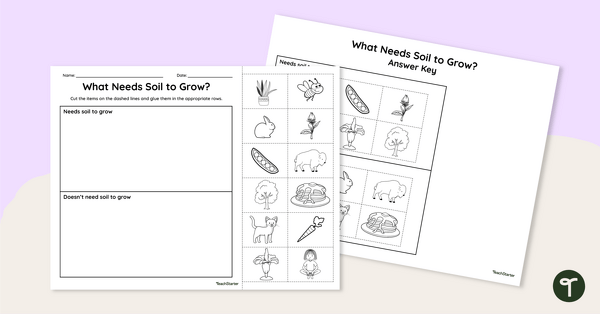
What Needs Soil to Grow? Cut and Paste Worksheet
Teach students what needs soil to grow with this cut-and-paste worksheet for early years students.
- Plus Plan
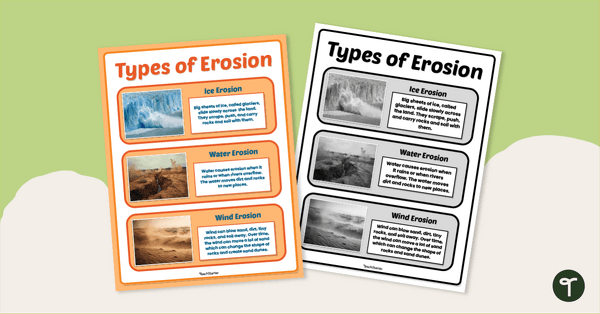
Soil Erosion Poster
Discover how wind, water, and ice change the Earth’s surface with a printable Soil Erosion Poster.
- Plus Plan
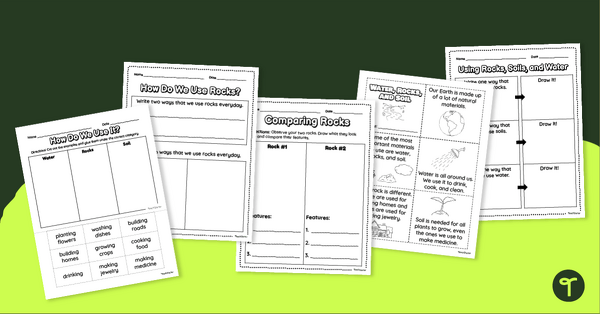
Using Rocks, Soils and Water - Year 2 Science Worksheets
Discover the importance of rocks, soils, and water as natural resources with a pack of printable Year 2 Science Activity Sheets.
- Plus Plan
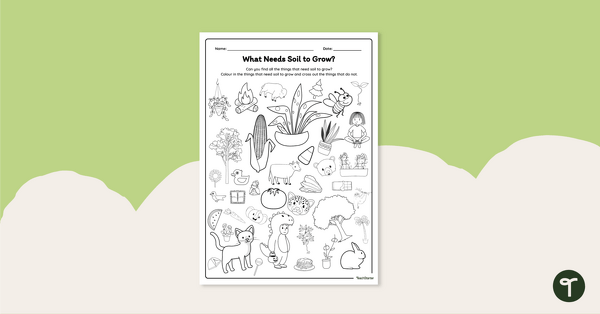
What Needs Soil to Grow? Colouring Worksheet
Teach students what needs soil to grow with this colouring worksheet for early years students.
- Plus Plan
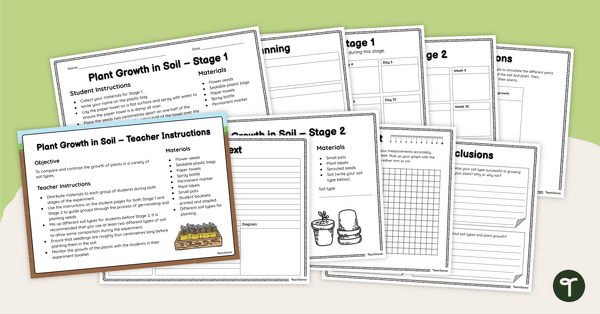
Plant Growth in Soils – Science Experiment
Explore how plants grow in different types of soil with this science experiment perfect for primary school science lessons.
- Plus Plan
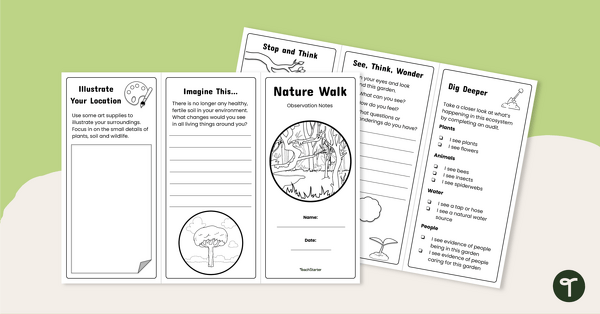
Nature Walk Brochure Template
Have your students explore their natural surroundings with this nature walk brochure template.
- Plus Plan
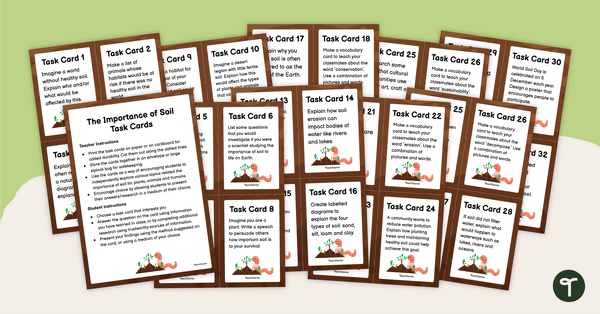
The Importance of Soil Task Cards
Have your students explore why healthy soil is so important for plants, animals and humans with this set of 32 student task cards.
- Plus Plan
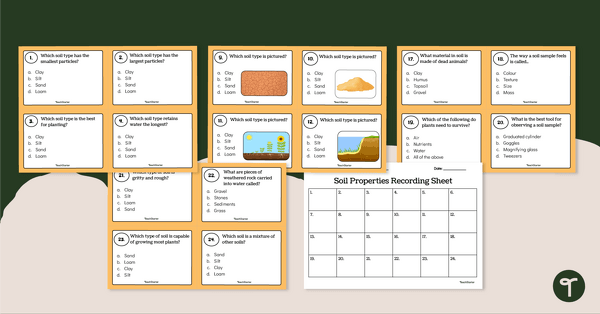
Properties of Soil Task Cards
Review the properties of the most common soil types with this set of 24 multiple-choice task cards.
- Plus Plan
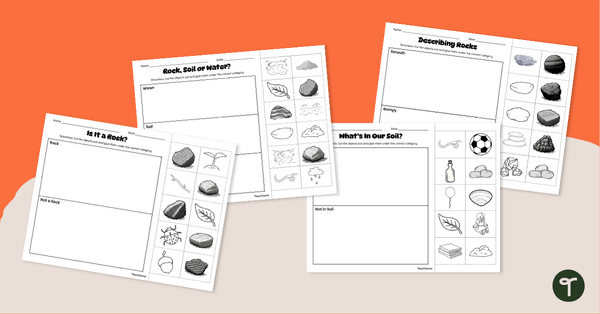
Foundation Year Science Worksheets - Observing Rocks and Soils
Use our printable science activities for Kindergarten / Foundation Year to help your students observe and categorise rocks and soils.
- Plus Plan
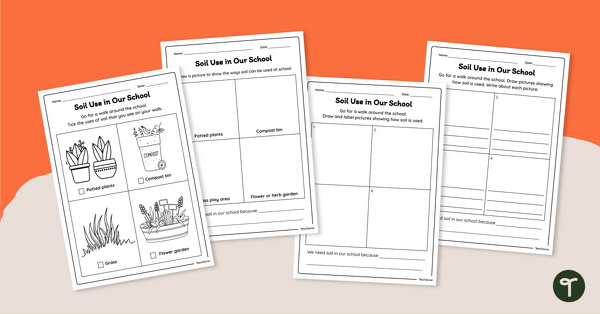
Soil Use in Our School Worksheets
Have students explore how soil is used around the school with this set of four differentiated worksheets.
- Plus Plan

How Soil Is Used by Living Things? Cut and Paste Worksheet
Explore the uses of soil with your students using this simple cut-and-paste worksheet for early years students.
- Plus Plan

Uses of Soil Interactive Activity
Teach students how animals, plants and humans depend on soil with this interactive science game for early years students.
- Plus Plan
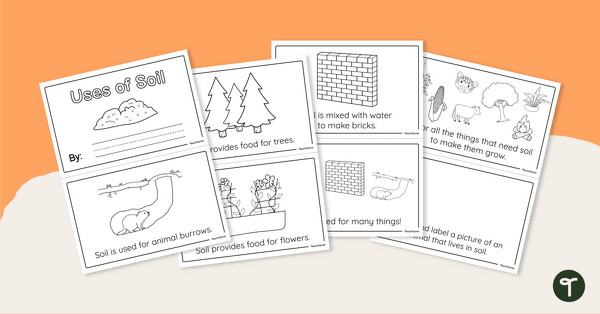
Uses of Soil Mini-Book
Teach students about the uses of soil with this printable book, perfect for early years science lessons!
- Plus Plan
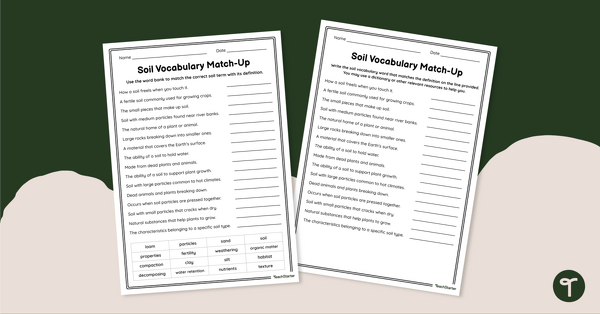
Soil Vocabulary Worksheet
Teach your students the subject-specific vocabulary related to soil and its properties with this vocabulary worksheet perfect for primary school science lessons.
- Free Plan
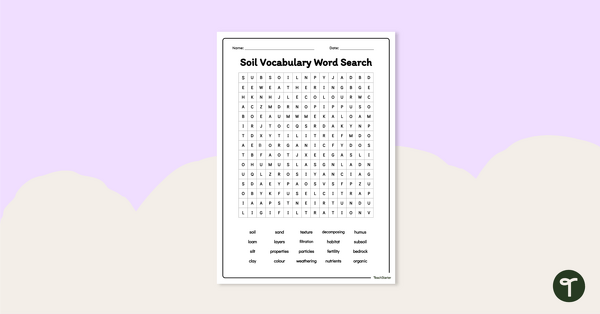
Soil Vocabulary Word Search
Immerse your students in the subject-specific vocabulary related to soil with this word search perfect for primary science lessons.
- Plus Plan
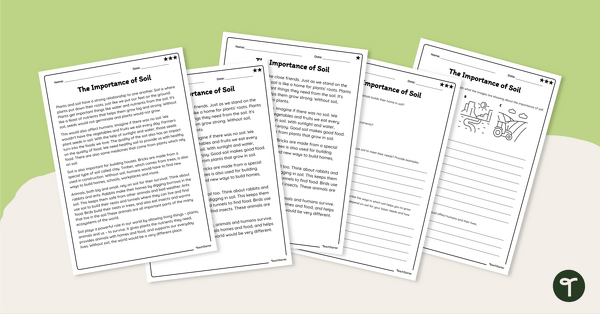
The Importance of Soil – Comprehension Worksheets
Teach your students about the importance of soil to plants, animals and humans with this differentiated reading comprehension passage with accompanying questions.
- Plus Plan
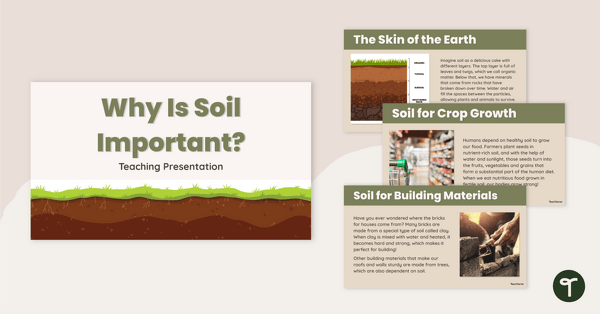
Why Is Soil Important? Teaching Slides
Explain to your students how living things depend on soil with this informative teaching presentation perfect for primary school science lessons.
- Plus Plan
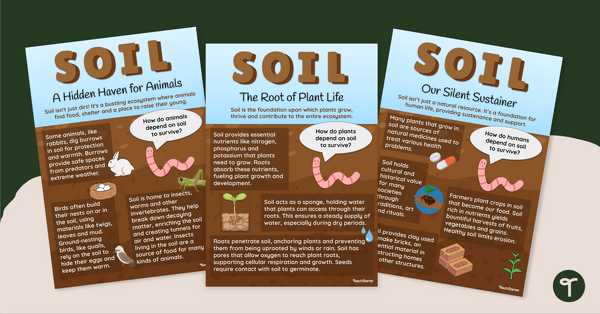
The Importance of Soil Posters
Show your students how plants, animals and humans need soil to survive with this set of three informative classroom posters to accompany your science lessons.
- Plus Plan
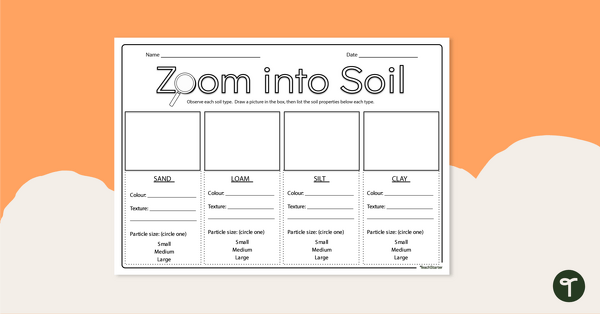
Observing Soil Worksheet
Transform your students into soil detectives as they explore the colour, texture and particle size of various soil types.
- Plus Plan
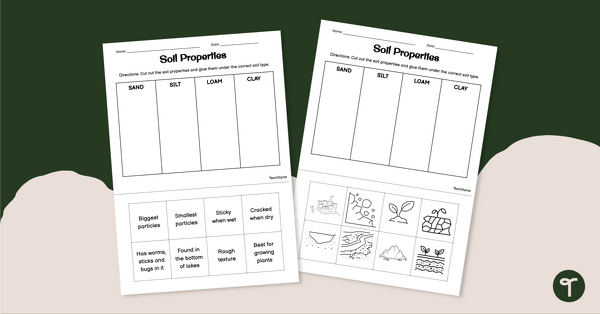
Soil Properties Cut and Paste Worksheet
Download this soil properties cut-and-paste worksheet to explore soil types and their properties in your science lessons.
- Plus Plan
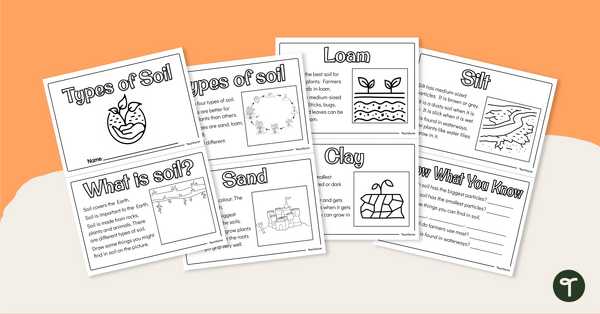
Types of Soil Mini-Book
Teach your students about the four main types of soil with this printable book, perfect for your science lessons!
- Plus Plan
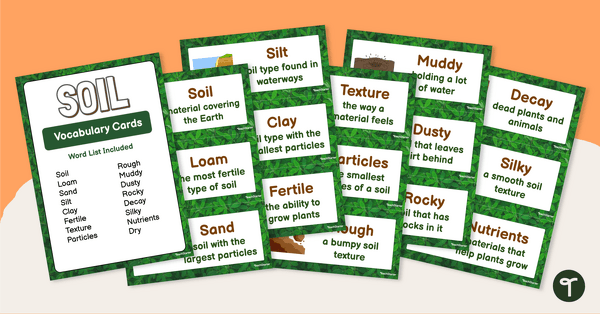
Soil Word Wall Vocabulary Cards
Immerse your students in subject-specific vocabulary related to soil types and their properties with this set of 16 illustrated vocabulary cards.
- Plus Plan
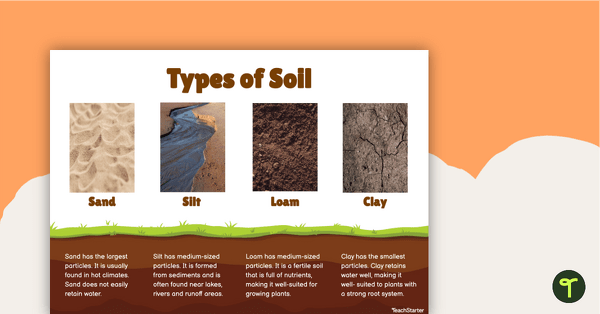
Types of Soil Chart
Remind your students about the four main types of soil with this soil chart for your classroom.
- Plus Plan
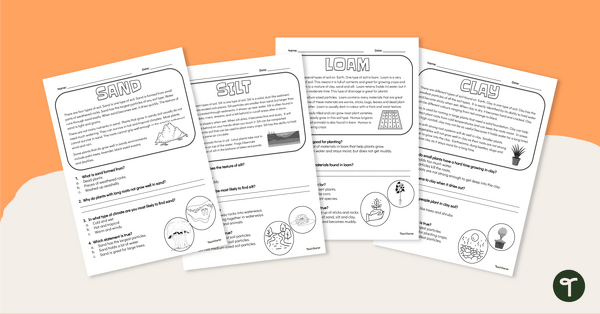
Types of Soils – Comprehension Worksheets
Explore the properties of sand, silt, loam and clay with a set of 4 reading passages with accompanying comprehension questions.
- Plus Plan
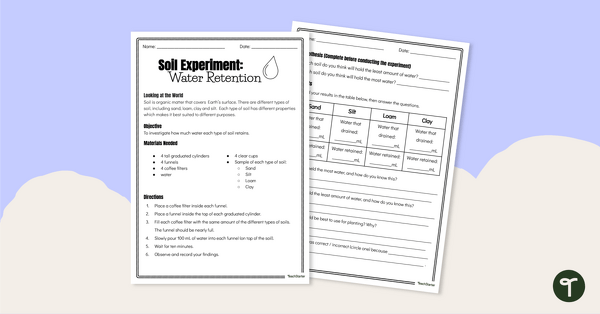
Water Retention in Soils – Science Experiment
Explore the water retention capabilities of sand, silt, loam and clay with this science experiment for kids.
- Plus Plan
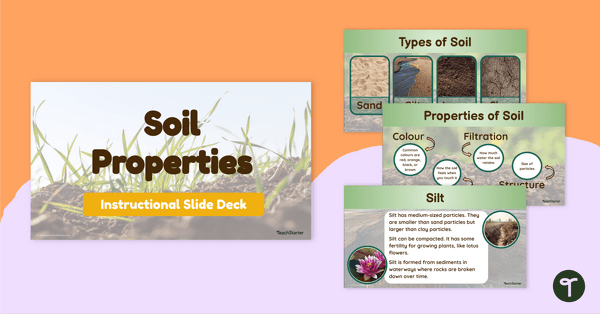
Properties of Soil Teaching Slides
Explore the properties of sand, silt, loam and clay with this comprehensive set of teaching slides.
- Plus Plan
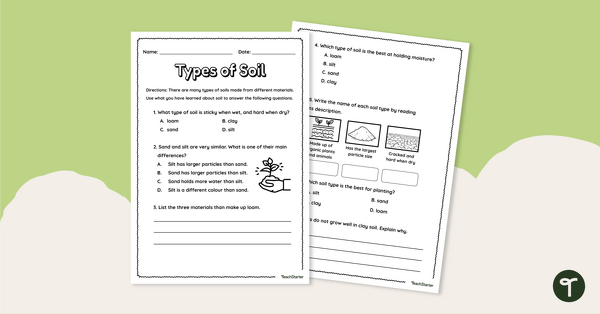
Types of Soil Worksheet
Identify and describe different soil types with this worksheet.
- Free Plan
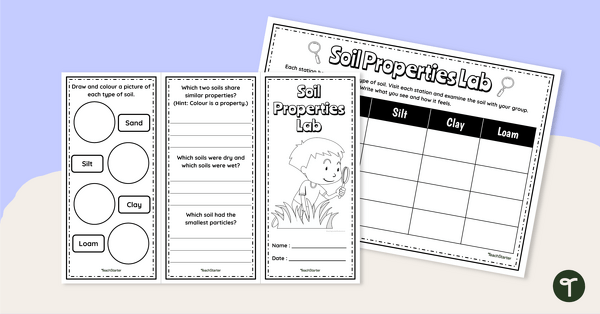
Soil Properties Lab – Brochure Template
Investigate different soil types and their properties with this hands-on activity.
- Plus Plan
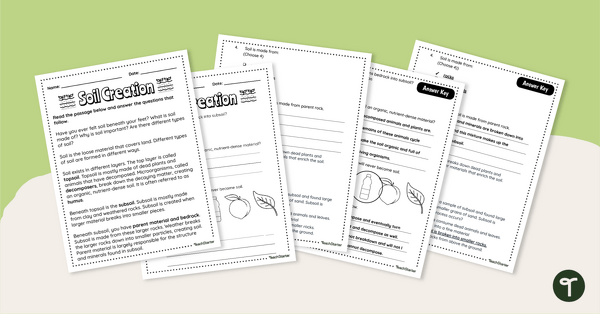
Soil Creation – Worksheet
Integrate reading and science with this 7-question comprehension worksheet about soil.
- Plus Plan
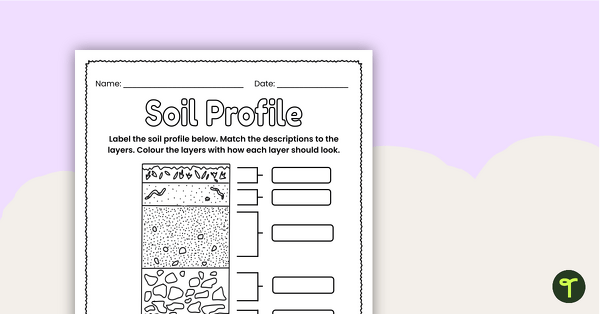
Label a Soil Profile – Worksheet
Identify and label different layers with this soil profile worksheet.
- Plus Plan
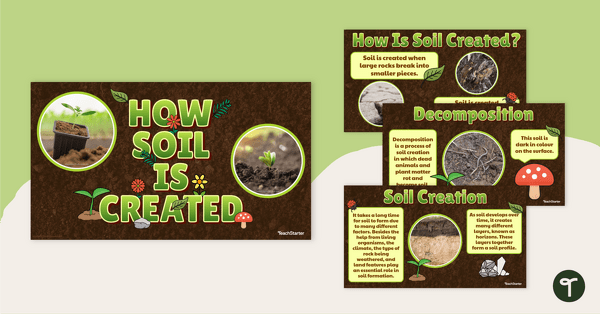
How Soil Is Created – Teaching Presentation
Learn about how soil is made with this 15-slide teaching presentation.
- Plus Plan

Types of Soil – Teaching Presentation
Practise identifying different types of soil with this 18-slide teaching presentation.